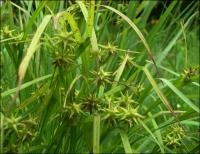Description
Cool club-like maces at the ends of stems- June to October
Cool club-like maces at the ends of stems- June to October
Cool club-like maces at the ends of stems- June to October
Profusion of small classic daisies May-July atop fragrant silver foliage. Cut back for rebloom. Let the seeds drop for more plants next year. If you cut them back after the 1st flowering they will rebloom for most of the summer and fall.
Size: 2’ x 3’
Care: sun in moist well drained soil
Native: central & southern Europe
Named by Carl Heinrich Schultz (1805-1867)
Dark pink-purple flowers from late spring to mid-summer
Size: 32” x 18”
Care: full sun to part shade in moist well-drained soil
Native: Europe
Wildlife Value: a favorite of Bumblebees
In Greek mythology Silene was a companion of Bacchus who was covered with foam. Dioicus means that male and female plants are separate. Described by 1750’s. Grown in American gardens since 1800’s
Soft, majestic purple-magenta thistles on prickly silver foliage and stems.
Can not ship to: Arizona, Arkansas, Colorado, Connecticut, Idaho, Missouri, Nebraska, Nevada, New Mexico, North Dakota, Oklahoma, Oregon, South Dakota, Texas, Utah, Washington and Wyoming.
Size: 4-6’ x 2”
Care: full sun in moist, well-drained soil
Native: Europe and western Asia
Wildlife Value: Bees, butterflies and birds
Identified by Dioscorides in De Materia Medica for medicinal use around 70 A.D. Chosen as the symbol of Scotland by King James V. According to legend the Scotch thistle helped Scotland fend off a night-time Viking invasion by preventing a sneak attack. It caused the Vikings to scream in pain waking the Scots. Introduced to American gardens in late 1800’s.
Golden daisies waive at the sun from July to September, its cup shaped leaves hold water where butterflies drink & bathe
Can not ship to: Connecticut and New York
Size: 7’ x 3’
Care: full sun to part shade in moist soil
Native: Central North America, native to Wisconsin.
Awards: England’s Royal Horticultural Society Award of Merit
Sap used by Native Americans to chew and freshen breath. Also used to cure colds, neuralgia, fever, and liver disorders. The Chippewa used to stop lung hemorrhaging, menstrual bleeding and cure chest pain. The Winnebago drank a potion from the plant to purify themselves before a buffalo hunt. For the Iroquois it cured paralysis, prevented children from seeing ghosts and illness caused by the dead. Lakota Sioux: “Children sometimes use the resin as chewing gum. An infusion of the whole plant is used to rid horses and humans of intestinal worms. An infusion of the leaves is used to loosen phlegm in the lungs. Described and classified in 1753.

